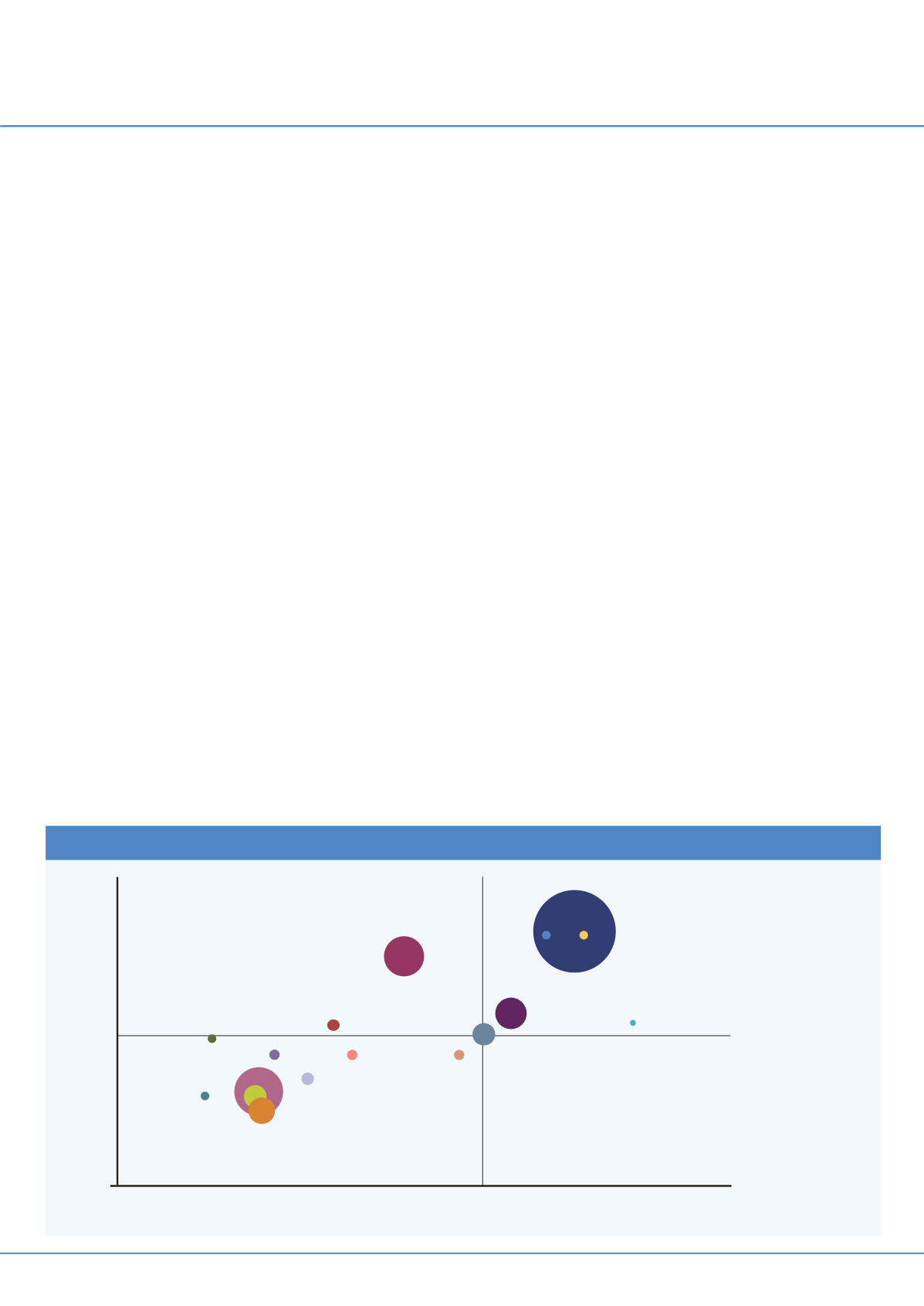
15
ECONOMICOUTLOOK
Prospects soften
june 2014
international
construction
>
Prospects soften
The flow of capital to the US, political uncertainty and a lack of reform are reducing the construction
growth rates in Asia. However, the region still looks one of the strongest in theworld, and some key
markets are good bets.
Scott Hazelton
reports.
M
any factors will play into Asia’s
economic performance this year. They
include themovement of capital out of
emerging markets, key elections and the pace of
domesticmacroeconomic reforms.
For example, China’s rapid credit expansionhas
created vulnerabilities in real estate, banking, and
local government with fiscal stimulus supporting
growth.Elsewhereelections inIndiaandIndonesia
shouldhelp to resolve policy uncertainties, but in
Thailand, political violence has hurt economic
performance and will diminish the country’s
attractiveness as amanufacturing platform.
On the plus side, as the global economy
improves, SouthKorea,Taiwan andVietnamwill
see faster growth, supported by rising high-tech
exports.
Chineseweakness
China’sGDP growth is slowingdue toweakening
real estate activity, tepid investment, and a sharp
deceleration inoutput of state-owned enterprises.
Construction starts (measured in floor space)
contracted -25.4% in the first three months of
2014, comparedwith +13.5% growth in 2013 as
awhole.
The construction weakness is widespread – of
China’s 31 regions, 27 reported declines in starts.
Profit growth has improved modestly in the
economy, which should support spending, given
thatmore than60%ofChina’s investment is self-
funded, and a significant portion of that is from
retained earnings.
The government’s continued efforts to rein in
the credit bubble, particularly shadow-banking,
have skewed the housing market. The apparent
housing weakness is partially a high base effect,
as home buyers rushed into the market in early
2013 before the government implemented severe
housingmarket restrictions.
Home sales soared +69% year-on-year in 2013,
so the -7.7% decline in the first quarter of 2014
must be seen in context. Fiscal stimulus will be
applied tokeepGDPgrowthabove7%, including
spending on railways, upgrades to low-income
housing, and small-business tax cuts.
Meanwhile in Japan, the sales tax increase from
5% to8% inApril is creating economic volatility.
Industrial production has been weak with many
industries keeping production at conservative
levelswhile reducing inventories.
TheBankof Japanhas counteredwithaggressive
monetary stimulus, but future growth will
dependonhow effectively theAbe administration
implements stimulus programmes and reforms
labour andproductmarkets.
On the positive side, employment has increased
at is fastest pace in more than seven years. The
depreciation of the Yen and a recovery in exports
will boost the profits and capital expenditures of
multinational companies.
In India, growth in domestic demand remains
sluggish and manufacturing is struggling as a
result. Much of the weak investment climate
was due to uncertainty ahead of the April-May
elections, and the victory of the Bharatiya Janata
Party (BJP), led byNarendraModi, should allow
for mild acceleration in the near term. A stable
government and initiation of reforms, including
a fast-track mechanism for project approvals,
should gradually revive investment.
High inflation and a chronic fiscal deficit limit
the scope for policy stimulus. Steps to liberalise
foreign direct investment are positive, but more
needs tobe done.
Risk vs reward
The chart puts these major constructionmarkets
Construction growth, risk andmarket sizes inAsia
●
Global Average
●
Australia
●
Bangladesh
●
China
●
Hong Kong
●
India
●
Indonesia
●
Japan
●
Malaysia
●
New Zealand
●
Pakistan
●
Philippines
●
South Korea
●
Singapore
●
Taiwan
●
Thailand
●
Vietnam
0
5
10
15
20
25
30
35
40
45
50
9%
8%
7%
6%
5%
4%
3%
2%
1%
0%
Average construction spending growth 2013-18
ConstructionRisk Score


